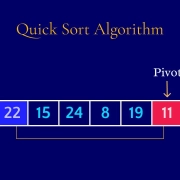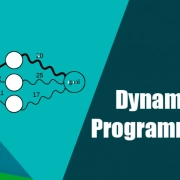Understanding the Role of the Root Node in Decision Trees
Decision trees are a versatile and powerful machine learning algorithm widely used for both classification and regression tasks. At the heart of every decision tree lies the root node, a fundamental component that plays a pivotal role in the tree’s construction and the overall decision-making process. In this article, you will delve deep into the concept of the root node in decision trees, explore its significance, and provide detailed code examples to illustrate its critical function.
The Root Node: Gateway to Decision-Making
The root node is the initial node at the top of a decision tree. It serves as the starting point for all decision-making processes within the tree. Essentially, the root node represents the first feature or attribute upon which the entire dataset will be split. This initial split forms the foundation for the subsequent decision tree structure.
The primary objective of the root node is to identify the feature that provides the best separation of the data into distinct classes or values. This separation is typically based on a measure of impurity or information gain. Two commonly used impurity measures are Gini impurity and entropy. Let’s briefly explain these concepts:
- Gini Impurity: Gini impurity measures the probability of misclassifying a randomly chosen element if it were labeled according to the class distribution in the data subset. A lower Gini impurity indicates better separation.
- Entropy: Entropy quantifies the disorder or impurity in a dataset. In decision trees, it is used to measure the information gain achieved by splitting the data based on a particular feature. Lower entropy implies better separation.
The root node’s role is to assess all available features and select the one that maximizes information gain or minimizes impurity. Once the optimal feature is identified, the data is partitioned into subsets, and child nodes are created to continue the decision-making process for each subset.
Code Examples
To gain a deeper understanding of the root node’s significance, let’s explore some practical code examples using Python and the scikit-learn machine learning library. We’ll demonstrate both classification and regression scenarios.
Example 1: Decision Tree Classifier
In this example, we’ll use a Decision Tree Classifier to classify a dataset based on the well-known Iris dataset.
# Import necessary libraries from sklearn.datasets import load_iris from sklearn.tree import DecisionTreeClassifier from sklearn.tree import export_text # Load the Iris dataset iris = load_iris() X, y = iris.data, iris.target # Create a Decision Tree Classifier clf = DecisionTreeClassifier(random_state=42) # Fit the classifier to the data clf.fit(X, y) # Print the decision tree structure tree_rules = export_text(clf, feature_names=iris.feature_names) print(tree_rules)
The output will display the decision tree structure, with the root node’s decision criteria at the top.
Example 2: Decision Tree Regressor
In this example, we’ll utilize a Decision Tree Regressor to predict Boston Housing Prices using the Boston Housing dataset.
# Import necessary libraries from sklearn.datasets import load_boston from sklearn.tree import DecisionTreeRegressor from sklearn.tree import export_text # Load the Boston Housing dataset boston = load_boston() X, y = boston.data, boston.target # Create a Decision Tree Regressor regressor = DecisionTreeRegressor(random_state=42) # Fit the regressor to the data regressor.fit(X, y) # Print the decision tree structure tree_rules = export_text(regressor, feature_names=boston.feature_names) print(tree_rules)
In this example, you’ll observe the root node’s decision criteria prominently featured at the top of the tree structure.
Conclusion
The root node in a decision tree serves as the cornerstone of the entire decision-making process. It determines which feature to use for splitting the data, thus influencing the structure and predictive accuracy of the decision tree. By selecting the feature that maximizes information gain or minimizes impurity, the root node sets the stage for effective decision-making and accurate predictions.
In this article, we have explored the role and significance of the root node in decision trees. We’ve provided detailed code examples to illustrate its critical function in both classification and regression scenarios. Understanding the importance of the root node is essential for anyone working with decision trees, as it forms the basis for creating robust and accurate machine-learning models.






